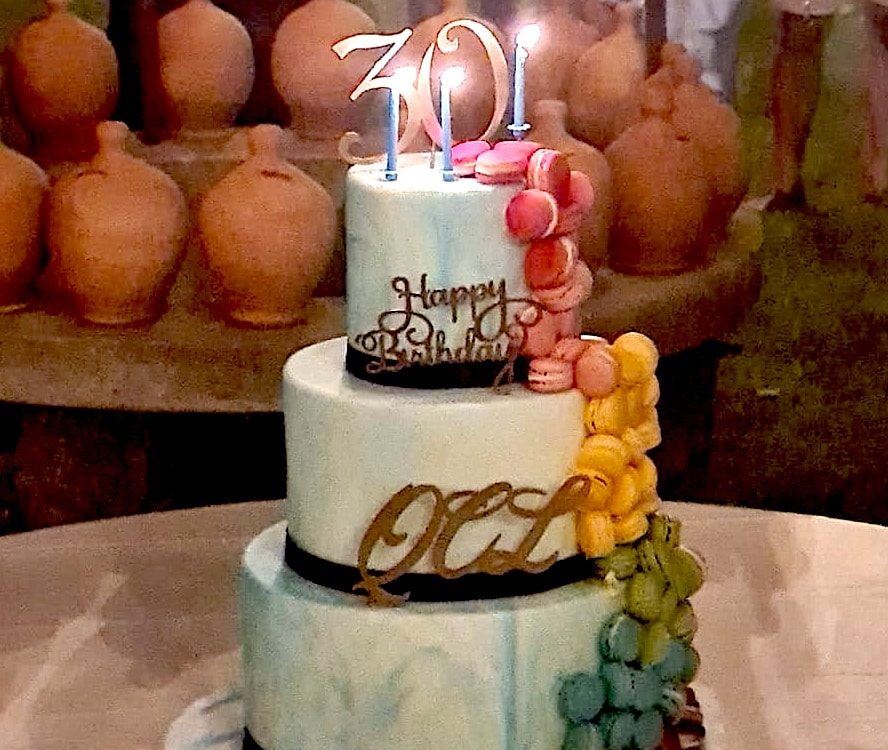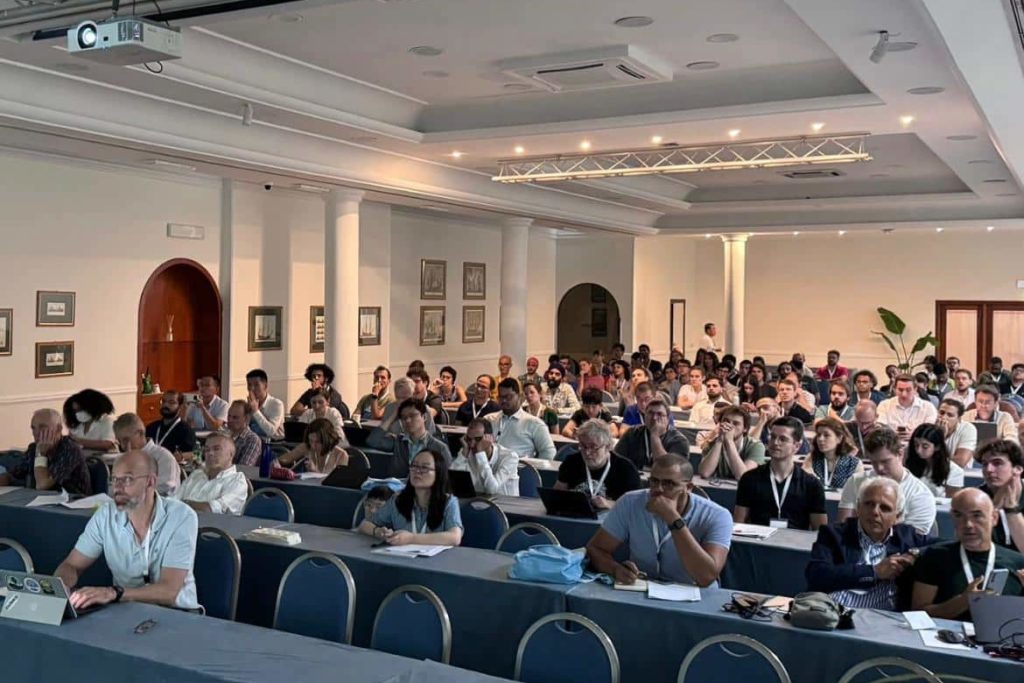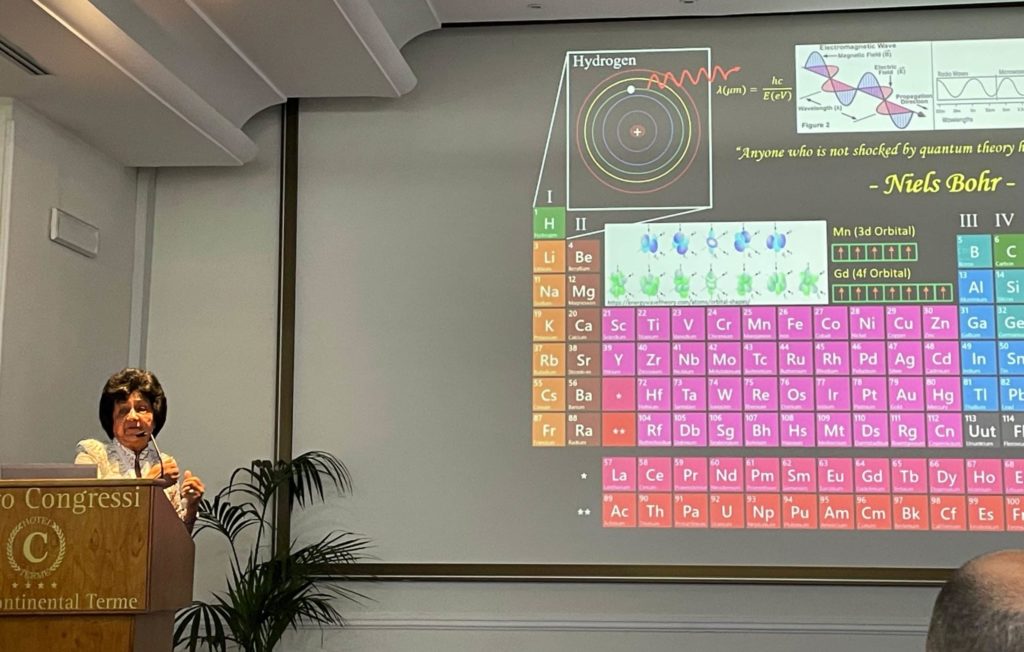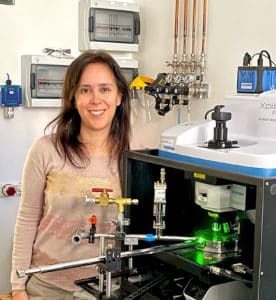
From its first “switch-on” at Bell Labs, USA, 30 years ago, the Quantum Cascade Laser has paved the way for a vast number of applications in the electromagnetic spectrum, covering wavelengths from the microwave to the infrared regions. A conference organized by Cnr Nano and Cnr INO, with participation from specialists worldwide in the fields of photonics, quantum sciences, and nanofabrication, celebrated the significant advances achieved by this technology, looking towards the future of a "quantum by design" laser.
The Quantum Cascade Laser (QCL) is an advanced and innovative technology that exploits quantum phenomena to generate laser light with extreme precision. Unlike traditional lasers, which emit light over a broader frequency range, quantum cascade lasers produce highly precise and controlled radiation in the mid- and far-infrared bands (infrared is also known as thermal radiation and lies between microwaves and visible light). This is made possible by a unique operational process: an internal structure composed of semiconductor layers allows electrons to 'cascade' through multiple layers, emitting photons at each step, which generates laser light in the mid- and far-infrared spectrum very effectively.
First demonstrated in 1994 by Federico Capasso and his team at Bell Laboratories, the quantum cascade laser has had a significant impact on photonics, opening up new possibilities for scientific and industrial applications requiring high precision and sensitivity. Italy has developed excellent expertise in this technology, thanks to the contributions of research centers and universities, including Cnr Nano, which has become an international reference point in the field.
To celebrate 30 years of the QCL and its applications the International Quantum Cascade Laser School & Workshop 2024 (IQCLSW 2024) was held from August 25th to 30th in Ischia. The event was organized by the Istituto Nazionale di Ottica (Cnr-INO) and the Istituto Nanoscienze (Cnr-Nano), along with the University of California, Los Angeles (UCLA).
This edition of the Workshop provided a unique opportunity to present the latest breakthroughs, and brought together 210 participants from around the world, including leading experts and emerging talents. The event featured tutorial sessions to train the next generation of QCL scientists, scientific as well as presentations and an Industrial Session, addressing fundamental physics, emerging applications in photonics and quantum technologies. At the conclusion of the conference, the Editor-in-Chief of Nature Photonics awarded the best talk and the best student poster, recognizing outstanding contributions to the field.
The Italian National Research Council (CNR) boasts established and excellent expertise in the field of Quantum Cascade Lasers. In particular, Cnr Nano has contributed to significant technological and scientific advancements in this area. Among them: the first quantum cascade laser operating at Terahertz frequencies was developed at the NEST Laboratory of Scuola Normale Superiore and Cnr Nano; one of the co-inventors of the quantum cascade laser based on semiconductor superlattices is Gaetano Scamarcio, current director of Cnr Nano. The Terahertz Photonics research group at Cnr Nano, led by Miriam Serena Vitiello, has long been active in designing Terahertz band quantum cascade lasers, based on semiconductor nanostructures or two-dimensional materials like graphene. Among the many European projects awarded to CNR to advance QCL laser research and development for various practical applications, Miriam Vitiello of CNR Nano has secured three prestigious European Research Council (ERC) grants: TeraScan, SPRINT, and Star.
Miriam Serena Vitiello, Research Director at Cnr Nano in Pisa and Chair of IQCLSW 2024, emphasizes: “Thanks to infrastructure enhancements at CNR, such as the PASCQUA research infrastructure, QCL lasers can now be entirely developed in Italy: from complex design to custom-built quantum materials to nanoscale assembly, these steps are fully realized in Pisa at the NEST Laboratory of CNR Nano and Scuola Normale Superiore. This remarkable technological achievement allows our researchers to explore the vast possibilities in fields like sensing, nanoscale imaging, and secure communications”.




| Cookie | Duration | Description |
|---|---|---|
| cookielawinfo-checkbox-analytics | 11 months | This cookie is set by GDPR Cookie Consent plugin. The cookie is used to store the user consent for the cookies in the category "Analytics". |
| cookielawinfo-checkbox-functional | 11 months | The cookie is set by GDPR cookie consent to record the user consent for the cookies in the category "Functional". |
| cookielawinfo-checkbox-necessary | 11 months | This cookie is set by GDPR Cookie Consent plugin. The cookies is used to store the user consent for the cookies in the category "Necessary". |
| cookielawinfo-checkbox-others | 11 months | This cookie is set by GDPR Cookie Consent plugin. The cookie is used to store the user consent for the cookies in the category "Other. |
| cookielawinfo-checkbox-performance | 11 months | This cookie is set by GDPR Cookie Consent plugin. The cookie is used to store the user consent for the cookies in the category "Performance". |
| viewed_cookie_policy | 11 months | The cookie is set by the GDPR Cookie Consent plugin and is used to store whether or not user has consented to the use of cookies. It does not store any personal data. |